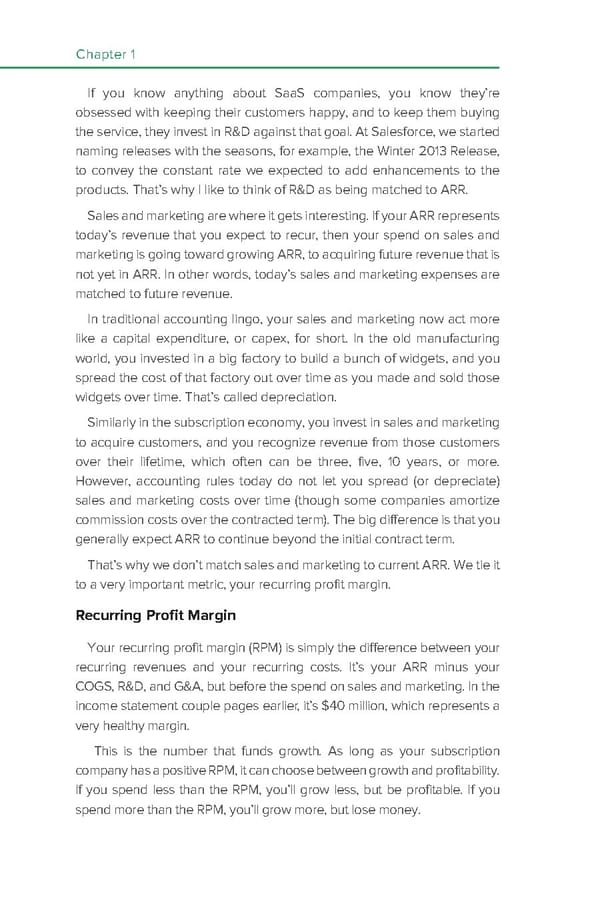Chapter 1 If you know anything about SaaS companies, you know they’re obsessed with keeping their customers happy, and to keep them buying the service, they invest in R&D against that goal. At Salesforce, we started naming releases with the seasons, for example, the Winter 2013 Release, to convey the constant rate we expected to add enhancements to the products. That’s why I like to think of R&D as being matched to ARR. Sales and marketing are where it gets interesting. If your ARR represents today’s revenue that you expect to recur, then your spend on sales and marketing is going toward growing ARR, to acquiring future revenue that is not yet in ARR. In other words, today’s sales and marketing expenses are matched to future revenue. In traditional accounting lingo, your sales and marketing now act more like a capital expenditure, or capex, for short. In the old manufacturing world, you invested in a big factory to build a bunch of widgets, and you spread the cost of that factory out over time as you made and sold those widgets over time. That’s called depreciation. Similarly in the subscription economy, you invest in sales and marketing to acquire customers, and you recognize revenue from those customers over their lifetime, which often can be three, five, 10 years, or more. However, accounting rules today do not let you spread (or depreciate) sales and marketing costs over time (though some companies amortize commission costs over the contracted term). The big difference is that you generally expect ARR to continue beyond the initial contract term. That’s why we don’t match sales and marketing to current ARR. We tie it to a very important metric, your recurring profit margin. Recurring Profit Margin Your recurring profit margin (RPM) is simply the difference between your recurring revenues and your recurring costs. It’s your ARR minus your COGS, R&D, and G&A, but before the spend on sales and marketing. In the income statement couple pages earlier, it’s $40 million, which represents a very healthy margin. This is the number that funds growth. As long as your subscription company has a positive RPM, it can choose between growth and profitability. If you spend less than the RPM, you’ll grow less, but be profitable. If you spend more than the RPM, you’ll grow more, but lose money.
 Subscription Economics Page 11 Page 13
Subscription Economics Page 11 Page 13